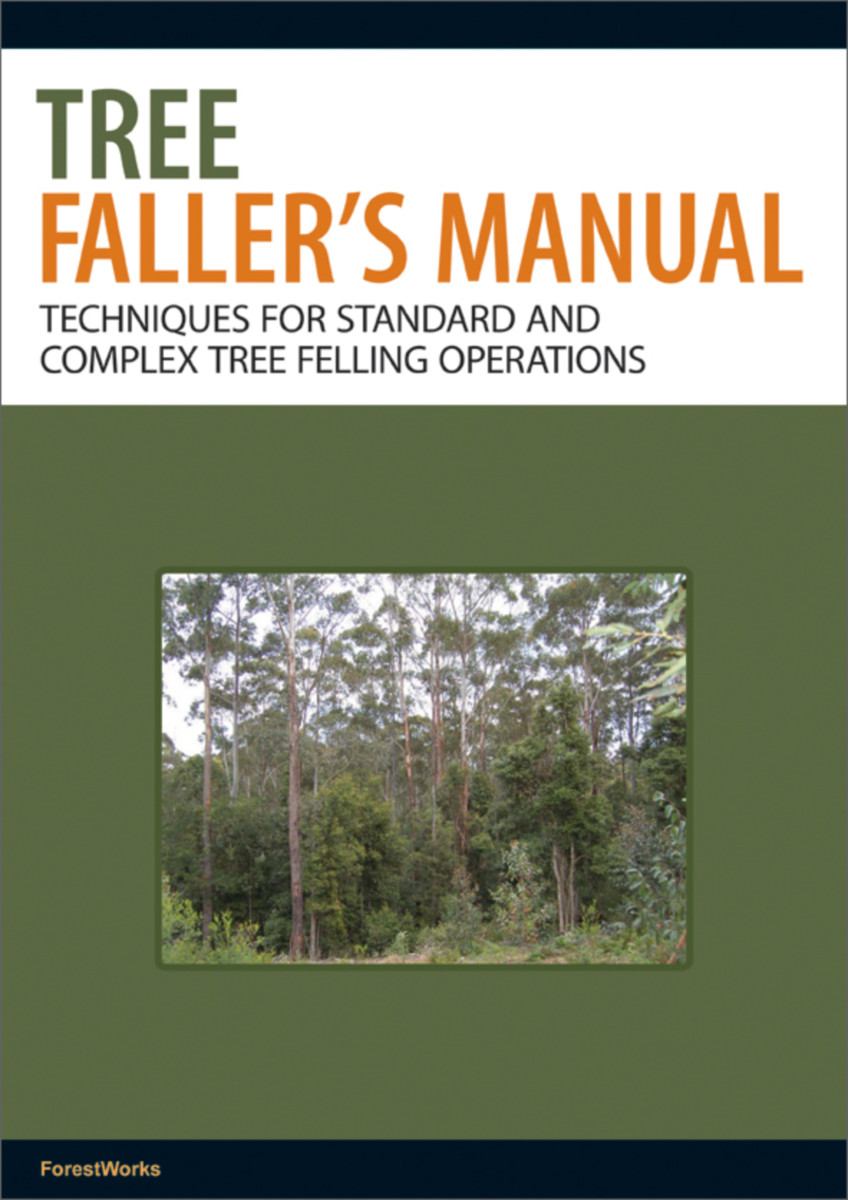EXCELLENCE IN SCIENCE PUBLISHING
The Tree Faller's Manual
Techniques for Standard and Complex Tree-Felling Operations
- Publisher
CSIRO Publishing - Published
8th March 2011 - ISBN 9780643101548
- Language English
- Pages 72 pp.
- Size 8.5" x 11.75"
- Images color illus
* Stresses workplace safety and risk assessment
* Covers basic tree felling, intermediate tree felling and advanced tree felling including hazardous trees
* Theory of felling, directional felling, preparation, escape route and cutting the scarf
* Builds on the information provided by the Chainsaw Operator’s Manual
The Tree Faller’s Manual is an essential handbook for forest operators and others who need to fell trees manually using a hand-held chainsaw. This manual builds on the information provided by the Chainsaw Operator’s Manual.
Tree felling is a high risk activity. Many fatalities and serious injuries have occurred as a result of being struck by falling trees, dislodged tree limbs or other dangers in the area. Most of these accidents are caused by using unsafe felling techniques and not following safe work procedures. This manual will guide the faller to safer work techniques.
The manual is based on the national competency standards for the forest and forest products industry where tree felling is covered using three categories: basic, intermediate and advanced. Basic tree felling applies to trees that are relatively small, with a single stem and no defects. Intermediate tree felling covers trees with single or multiple stems, limited defects, and lean and weight distribution that can be adapted to felling direction. Advanced tree felling applies to larger and more complex trees and includes trees deemed to be more hazardous.
Workplace safety, risk assessment and site preparation are included along with the theory, techniques and tools for each of the tree-felling categories.
1. Introduction
Compliance with licensing
Tree-felling categories
2. National competency standards
3. Professional attitude
4. Workplace safety
Risk assessment for tree fallers
Equipment, competence of faller and environment: Personal protective equipment; Your equipment; Other equipment; Competence of faller; The current and predicted weather conditions; The tree and its environment; Safe working distance; Escape route; Felling technique; Before starting the chainsaw – final check!
Safety warning signs used for felling operations
Hazardous trees: Typical examples of tree hazards; Typical examples of other hazards; Risk control process for trees with identified hazards
TREE FELLING
5. Theory of felling
Importance of directional felling
Considerations before felling each standing tree: Natural lean of tree; Weight distribution of crown; Which tree to fell first; Check for defects; Intergrowth with adjoining trees; Contact with adjoining trees; Wind conditions; Hangers or widow makers; Hung-up trees; Open spaces; Special conditions; Terrain; Hazards in the work area
6. Preparation at each tree prior to felling
Clean around base of tree
Prepare escape route: Escape route
7. Standard tree-felling techniques
The scarf : Function of the scarf; Types of scarfs; Features of a good scarf; Depth of scarf
Standard scarf
Other types of scarf: Humbolt scarf; 90° scarf; V scarf
Scarf cutting technique: Putting your body in position; Aiming along the desired direction of fall; Achieving scarf cut angles; Size of opening; Wing cuts; Scarf cuts not matched (unequal depth); Back cut
Back cutting techniques: Method Al; Method B
Hingewood: Hingewood for the side lean
Splitting trees: Tree species; Causes of splitting; Felling procedures to minimise splitting
Lifting trees
Wedges: Types of wedges; Using a wedge; Felling bars; As the tree falls; Post-felling checks
Tree with side lean: Tapered hingewood; Tapered hingewood plus wedge
Tree with forward lean: Back release cut – strap technique
Double leaders
Trees with backward lean
Techniques for small trees with the use of wedge or felling bar: Technique 1; Technique 2
COMPLEX FELLING TECHNIQUES
8. Felling hazardous trees
General guidelines
Large trees: Centre scarf
Defective trees: Hollow trees; Stags; Burnt-out trees
Large multiple leader trees
Windblown trees: Felling technique for windblown trees still attached to stump; Tree snapped off above the ground; Root ball is lifted; Bent or stressed trees
Heavy forward-leaning trees with diameter greater than bar length: Strap technique
9. Other techniques
Machine-assisted manual felling
Tree jacking
Glossary
Relevant state authorities and technical standards
Technical standards
ForestWorks
ForestWorks is a bi-partite, not-for-profit, expert representative of learning and skill development in the forest, wood, paper and timber products industry. ForestWorks performs a range of industry-wide functions acting as the channel between industry, Government and the Australian Vocational Education and Training (VET) departments. ForestWorks’ goal is to assist industry with their skills development objectives through national industry skills standards and qualifications.


